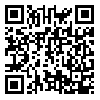IRPHE
Abstract: (728 Views)
Higher education as an institution has a long history, but as a field of study, it is considered a relatively new subject; Its effectiveness and impact on human life is beyond imagination. In the university, there are three functions of education, research and providing specialized services, and all three of these special functions are realized in a platform called curriculum as the heart of higher education. In the higher education systems of the world, there is a wide diversity regarding the approach, policy and curriculum development, which is placed in three levels: centralized, semi-centralized and decentralized. In Iran, the experience of developing curricula in two spectrums, semi-centralized and centralized, has been fluctuating and has gone through relatively significant changes, which requires deep reflection. The purpose of this article is to examine the course of policy making and the prevailing approach in each period, from the past to the present, in the curriculum planning system in Iran's higher education. This research was conducted in a completely qualitative field with a descriptive approach and using narrative analysis. The findings of the current research show that Iran's higher education has left the past situation of centralized politics and the exercise of power from top to bottom, and is leaning toward semi-centralization. Although the prerequisite for the desired situation (decentralization) is that universities, stakeholders and political institutions must reach sufficient maturity. At the end, solutions for transition from the current situation are provided.
Send email to the article author
| Rights and permissions | |
 |
This work is licensed under a Creative Commons Attribution-NonCommercial 4.0 International License. |


